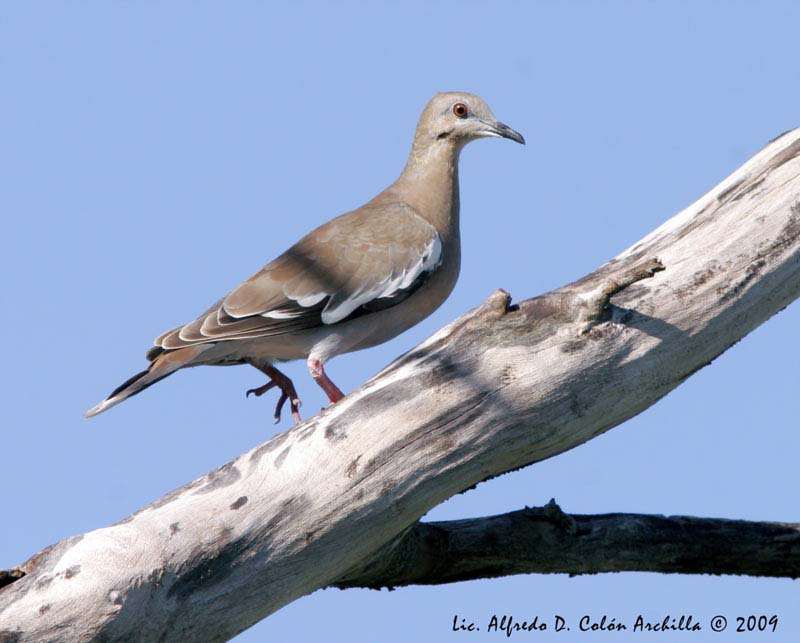
White-winged Dove
Zenaida asiatica
Columbiforme Order – Columbidae Family
BIOMETRICS:
Length: 27-31cm
Wingspan: 43-46 cm
Weight: 130-180 g
LONGEVITY : up to 25 years
DESCRIPTION:
White-winged Dove adult has greyish-brown plumage. When wings are spread, we can see conspicuous white wing-patch (visible at rest too) across outer wing coverts. Blackish flight feathers on upper wing contrast with white patch. Underwings show greyish coverts, and brown flight feathers. Tail is slightly rounded. Central feathers are brown. Outer tail feathers have grey bases and broad white tips, separated by black line. Belly is greyer than upperparts.
Head is greyish-brown, with black line on lower cheek. Eyes are bright red-orange, surrounded by bright blue bare skin. Bill is blackish. Legs and feet are pinkish-red, brighter in breeding plumage.
Both sexes are similar.

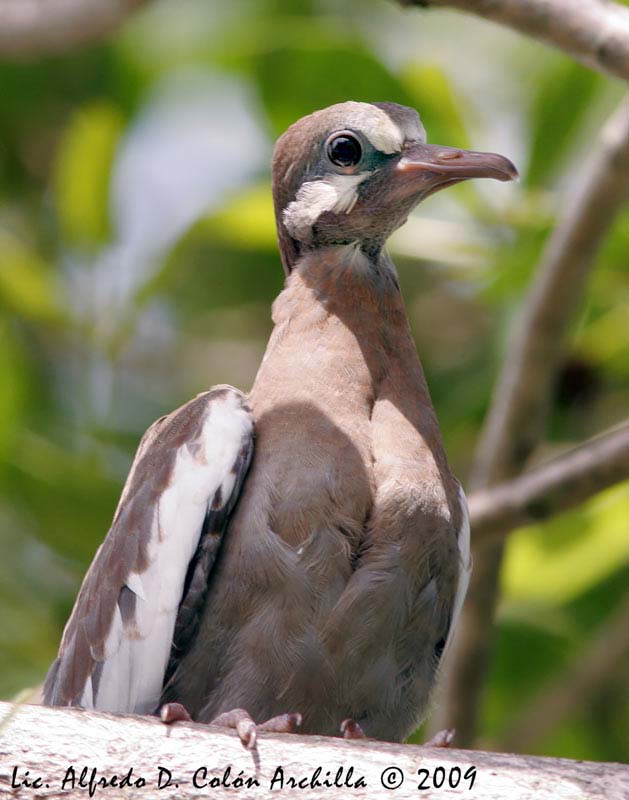
Juvenile resembles adult, but it lacks cheek patch. Legs and feet are dull reddish-brown. Eyes are brown to dull orange, and it lacks bare blue skin.
VOICE: SOUNDS BY XENO-CANTO
White-winged Dove utters cooing calls “hooo-hooo-hooo”. When perched, male utters elaborate call of several notes, with first section short and low, and second louder. Following sounds are more musical and strongly accented, ending in lower and slurred sounds. It is described as “who hoo, hoo-ah, hoo-hoo-ah, who-oo ».
Advertising call is shorter and more abrupt.
HABITAT:
White-winged Dove lives in scrub, woodlands, desert and cultivated areas. It occupies arid to semi-arid areas, from sea level to 1,500 metres.
RANGE:
White-winged Dove lives from SW of the United States, in Mexico and Central America, and into parts of South America, and in Caribbean. They are introduced in Florida where they are resident.
They breed in SW of US and northern Mexico in April, and winter in Mexico and Central America.
Birds of southern parts of the range are residents. Most of them are seasonally migratory, and if food resources are available as in urban areas, they winter in their breeding range.
BEHAVIOUR:
White-winged Dove is usually found singly, in pairs or in large flocks. It feeds mainly on seeds, masts and fruits. It feeds in leaf-litter in undergrowth, fields and parks in urban areas. This dove can occasionally ingest small stones which aid in digestion, and shells and small bones fragments which provide calcium necessary for production of crop milk and for eggshells.
White-winged Dove sometimes performs attack flights with other male, during territorial defence, courtship and early stages of nesting. These flights are performed with slapping wings while they strike with bills.
When threatened by terrestrial predator, White-winged Dove has reddened eyes and flails wings aggressively at intruder. It also raises and lowers its tail nervously when alarmed.
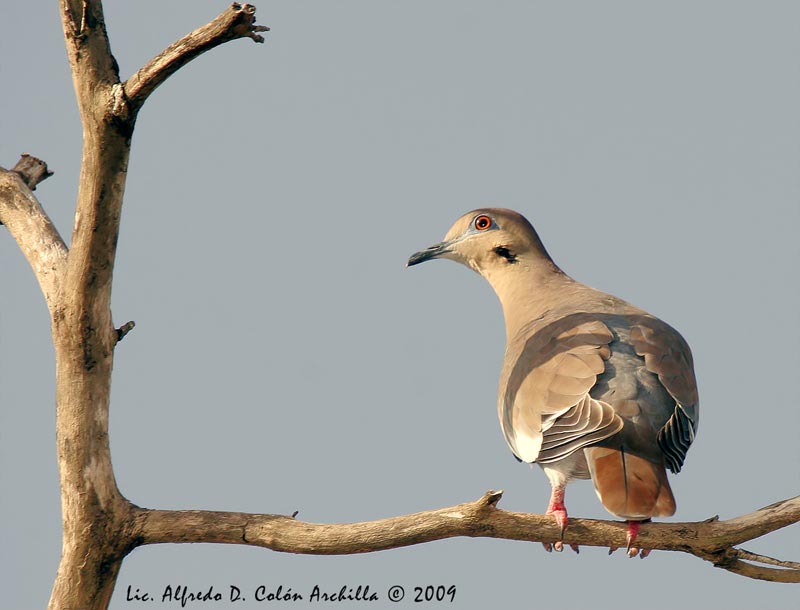
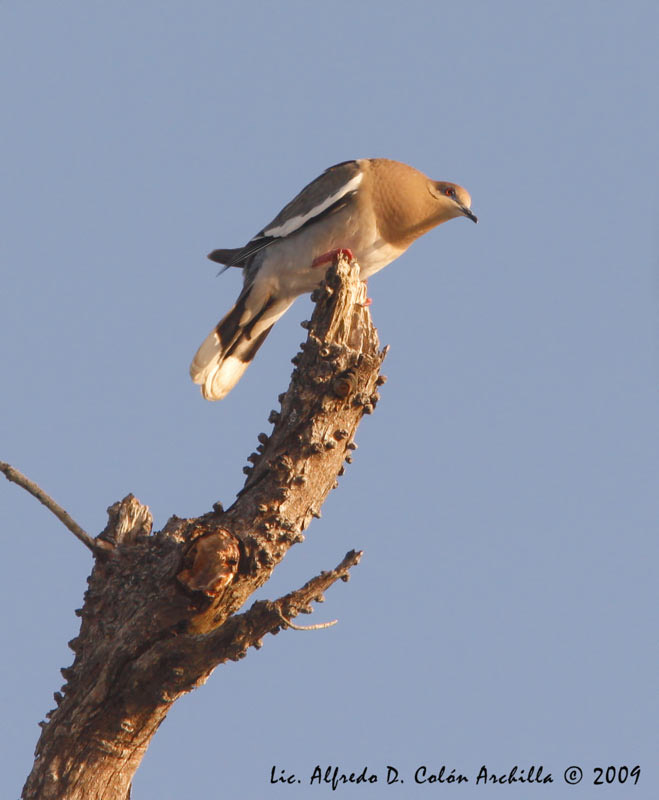
They are gregarious when feeding and on watering sites. They nest in colonies as little as 25 cm apart.
Courtship displays include male calls from low perch or ground during the day. Male bows in front of female, lowers the head, drops and quivers its wings, and raises the fanned tail in order to display the tail pattern.
Other displays show the male approaching female with fluffed feathers and inflated neck. Female often moves away and then, she flies off and male follows her. During flight displays, male rises, performing spirals and circles, and then, it returns with stiff wings, gliding to the perch from were this flight was initiated.
Female is resting nearby, watching this behaviour. Male continues body displays and repeats them several times during 15 minutes. Then, female moves to male for copulation which occurs in nest tree, during building stages.
When threatened by nest predator, adult performs broken-wing display. They also fly into cover, and into dense vegetation.
FLIGHT:
White-winged Dove has quiet, swift and direct flight.
REPRODUCTION:
Breeding season varies, according to the place. Female selects nest-site within territory. Nest is a loose platform made with twigs. It is sometimes lined with rootlets. It may be built in dense low shrub. In other parts of the range, White-winged Dove may build its nest in trees. Western species are rather solitary nesters, whereas eastern birds breed in huge colonies. Nest is often situated between 3 and 8 metres above the ground.
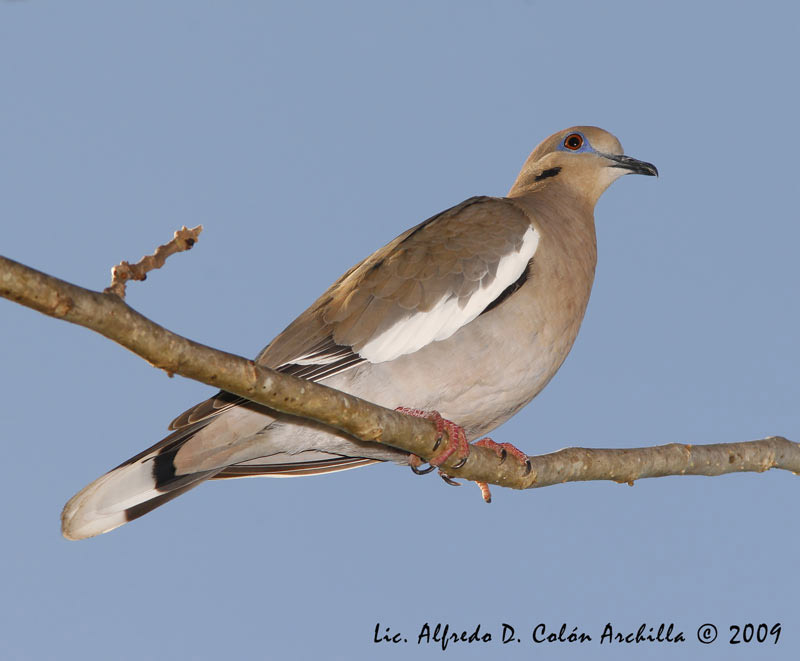
Female lays two creamy-white eggs. Incubation lasts about two weeks, and young fledge about 13 to 18 days after hatching. They may perform short flights within 11 days of age, and more after 15 days. Young are fed by both parents with crop milk. They remain within territory for two weeks more after fledging.
Both parents share incubation, male at day and female at night. Male defends the nest-site. They are sensitive to human disturbances.
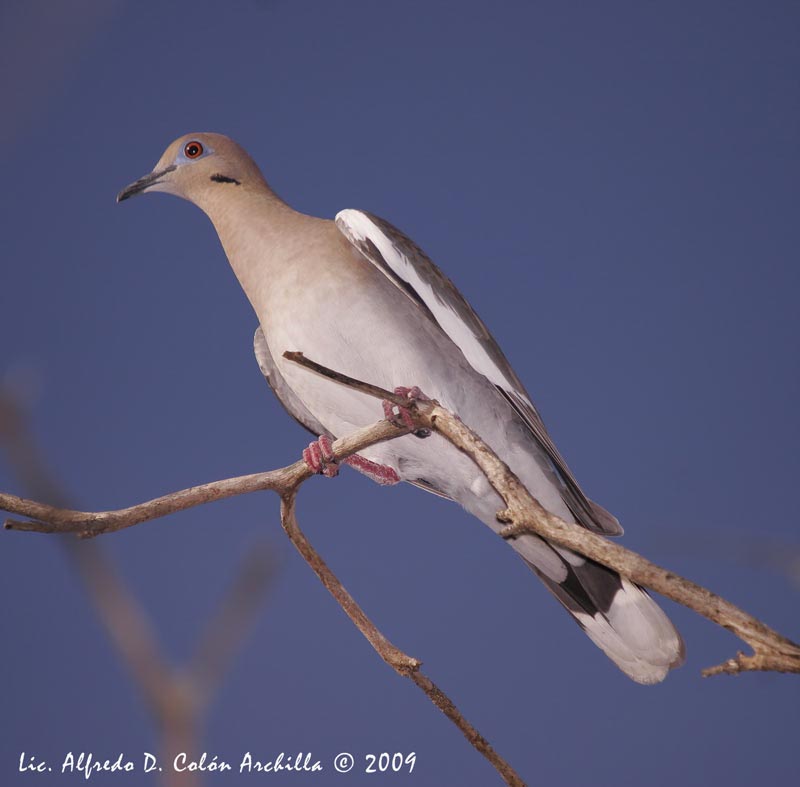
DIET:
White-winged Dove feeds mainly on seeds, masts and small fruits and berries.
PROTECTION/ THREATS / STATUS:
White-winged Dove populations seem to be stable in their range. Some declines are observed, due mainly to habitat loss and disturbances at nest-site.
Fr: Tourterelle à ailes blanches
All : Weißflügeltaube
Esp : Zenaida Aliblanca
Ital : Tortora alibianche
Nd : Witvleugeltreurduif
Russe : Белокрылая горлица
Sd : Vitvingad duva
Photographs by Alfredo Colón
Puerto Rico Wildlife
Text by Nicole Bouglouan
Sources :
PIGEONS AND DOVES by David Gibbs, Eustace Barnes and John Cox - Pica Press Sussex - ISBN: 1873403607
HANDBOOK OF THE BIRDS OF THE WORLD vol 4 by Josep del Hoyo-Andrew Elliott-Jordi Sargatal - Lynx Edicions - ISBN: 8487334229
All About Birds (Cornell Lab of Ornithology)
Animal Diversity Web (University of Michigan Museum of Zoology)
What Bird-The ultimate Bird Guide (Mitchell Waite)
Wikipedia (Wikipedia, The Free Encyclopedia)